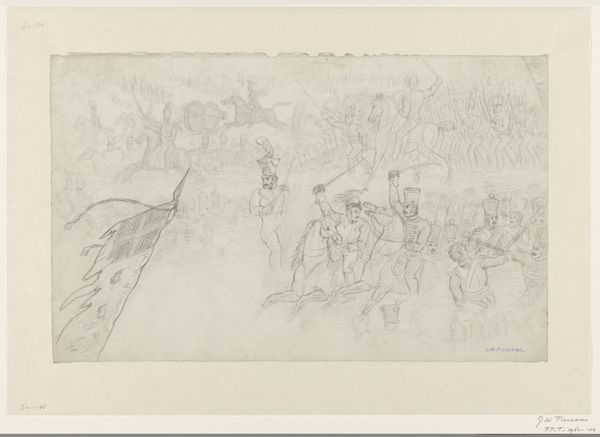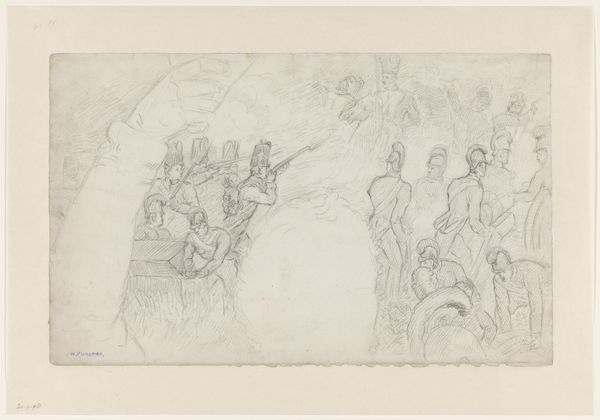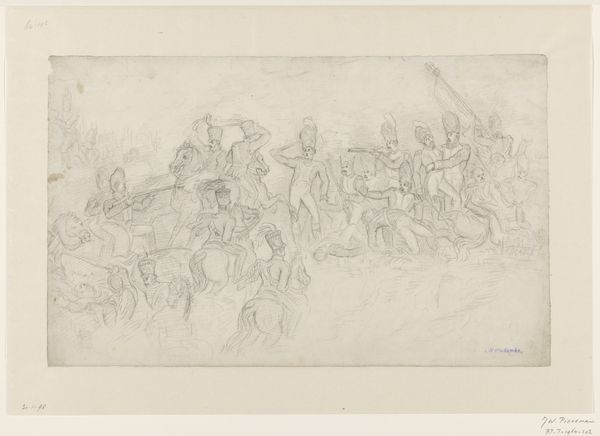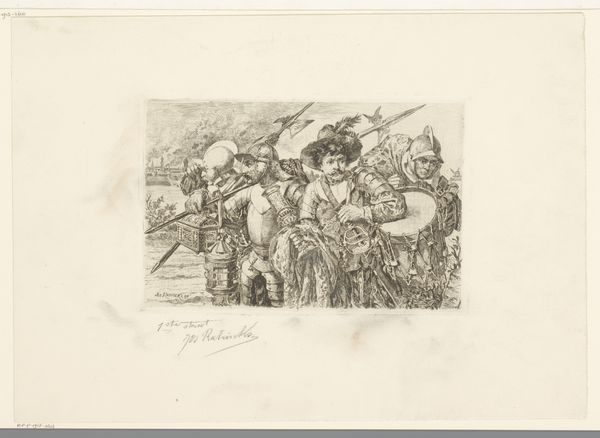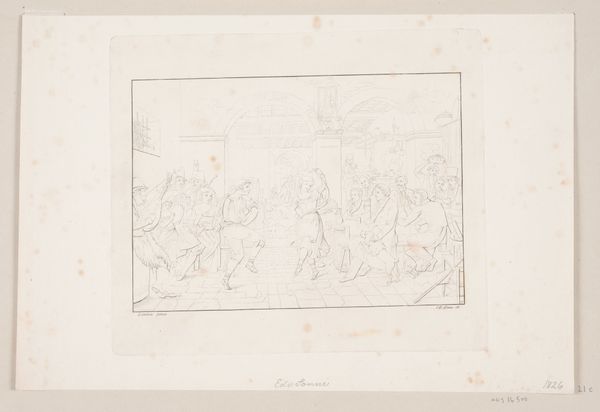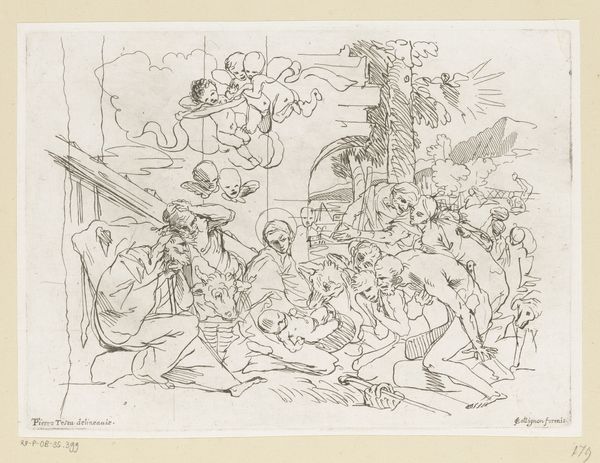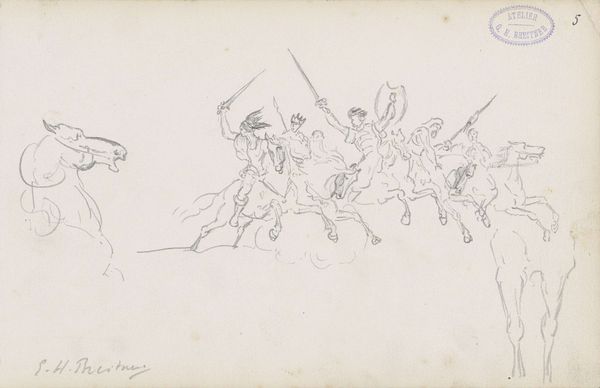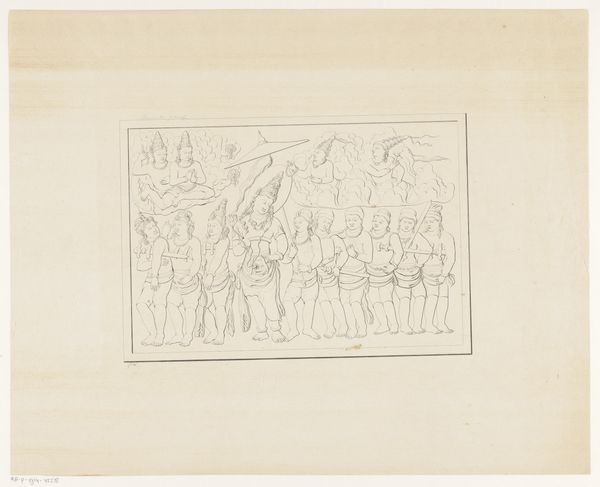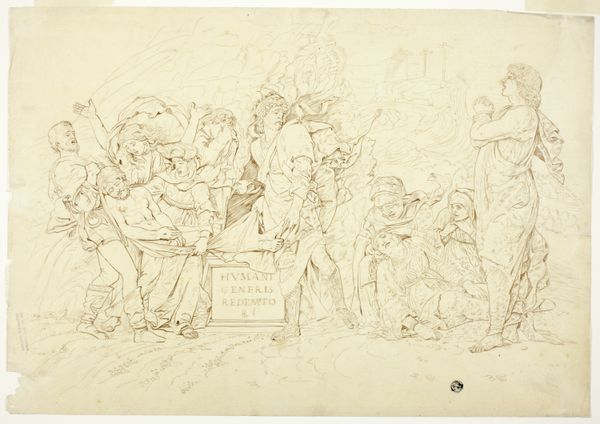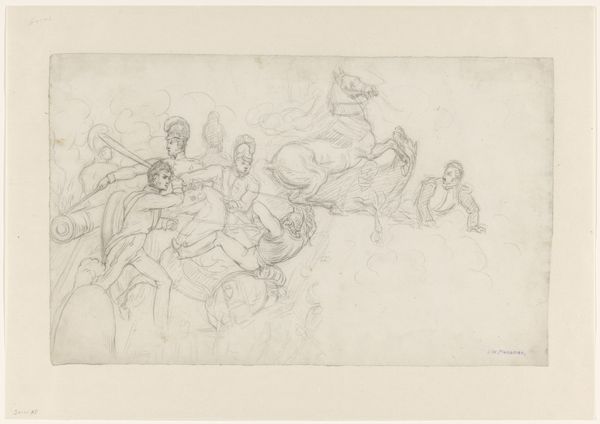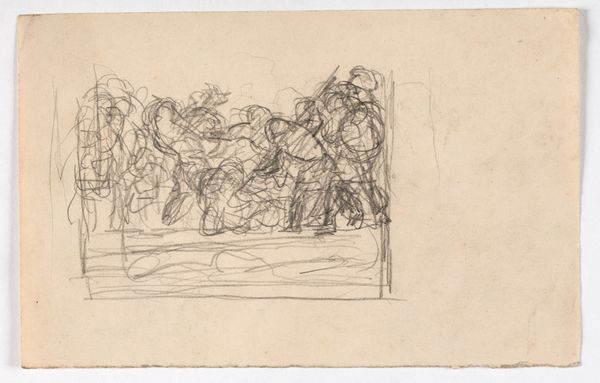
drawing, paper, pencil
#
drawing
#
landscape
#
paper
#
romanticism
#
pencil
#
history-painting
Dimensions: height 300 mm, width 482 mm
Copyright: Rijks Museum: Open Domain
Curator: Up next is a detail from "The Battle of Waterloo" by Jan Willem Pieneman, dating from between 1789 and 1853. Editor: It feels almost spectral, like a memory surfacing from a troubled dream. Such fragile, ghostly strokes… the medium feels so ephemeral considering the heavy subject. Curator: Absolutely, the sketch captures a key moment in history—a detail extracted from what became a monumental canvas. Pieneman employed pencil on paper, giving the artwork an intimate quality. Look at the faces; you sense both heroic resolve and underlying terror. Editor: That’s precisely what strikes me—the tension between the 'high art' historical narrative and the sheer physical grind of warfare. Pencil, a relatively inexpensive and easily portable material, used to depict something so grandiose and socially formative. How interesting is that disconnect? Curator: It speaks to the layers of interpretation embedded in this detail. Waterloo is more than just a battle; it is loaded with significance: the fall of Napoleon, the rise of new powers, and the reshaping of Europe. These men become symbolic figures. Editor: Symbols wrought in humble graphite. The artist would have made endless studies like this. It makes me wonder about the role of assistants, and where this kind of work fit within the larger economic framework of his studio, and the Royal support to realize the commision. This process and not some abstract notion of heroic masculinity interests me most. Curator: Fascinating! It makes you ponder what other untold stories linger within these preliminary lines. These almost accidental renderings still managed to reflect such monumental events, capturing not only military history but glimpses of human cost, sacrifice and shifts in European power dynamics. Editor: Yes, seeing this "detail" emphasizes the laborious and often collaborative nature of monumental painting. Curator: We hope this has shed some light on Pieneman's work! Editor: Absolutely. Remember to consider not just the final picture but also the material circumstances of art-making.
Comments
No comments
Be the first to comment and join the conversation on the ultimate creative platform.
